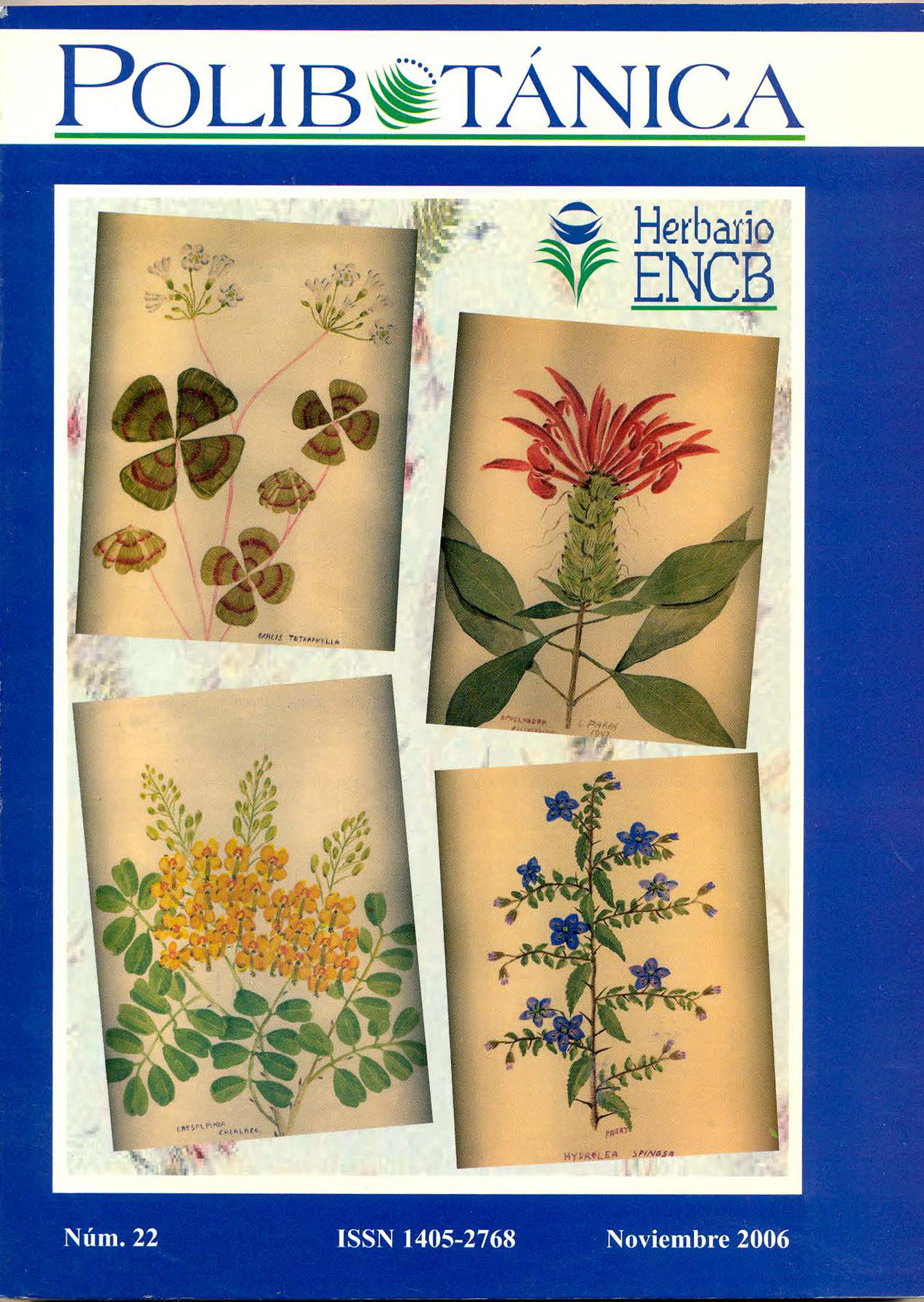ALTERACIONES ANATÓMICAS INDUCIDAS POR CACTODERA GALINSOGAE (NEMATA: HETERODERINAE) EN MIEMBROS DE ASTERACEAE
Abstract
We investigated the anatomical changes
induced by the cyst-forming nematode
Cactodera galinsogae in the weeds
Galinsoga parviflora and Bidens odorata,
both members of the Asteraceae, growing
in a naturally infested field of barley at ‘‘La
Raya’’, Singuilucan, Hidalgo. During the
2003 growing season, the weeds were
collected at 15, 30 and 45 days after
emergence. Their roots were washed and
fixed in Craf in the field. Part of the material
was stained with fuchsin-lactoglycerol and
cleared with clove oil; the other part was
embedded in paraffin for making slices with
the microtome and stained with fuchsin-fast
green. Cactodera galinsogae-induced
feeding sites (sincitia of irregular form) were
located mainly in the vascular cylinder and
cortex. The main changes at the cellular level
were: cells around the feeding sites
underwent hyperplasia, cytoplasm of the
sincitia became dense and granular, cortical
cells thickened and ruptured where the
nematodes penetrated, and a suber layer
formed around the mature females located
in the cortex. Furthermore, the xylem vessels
of the vascular cylinder were disorganized,
and magenta crystals of unknown nature
were observed in the cortex. Inside the
stained roots, juveniles (J2, J3, J4) and
mature females of C. galinsogae were
located in the cortex in a plane parallel to
the vascular cylinder, mostly in secondary
and tertiary roots.
Downloads
Published
Issue
Section
License

Polibotánica by Departamento de Botánica de la Escuela Nacional de Ciencias Biológicas del Instituto Politécnico Nacional se distribuye bajo una Licencia Creative Commons Atribución-NoComercial-CompartirIgual 4.0 Internacional.




















